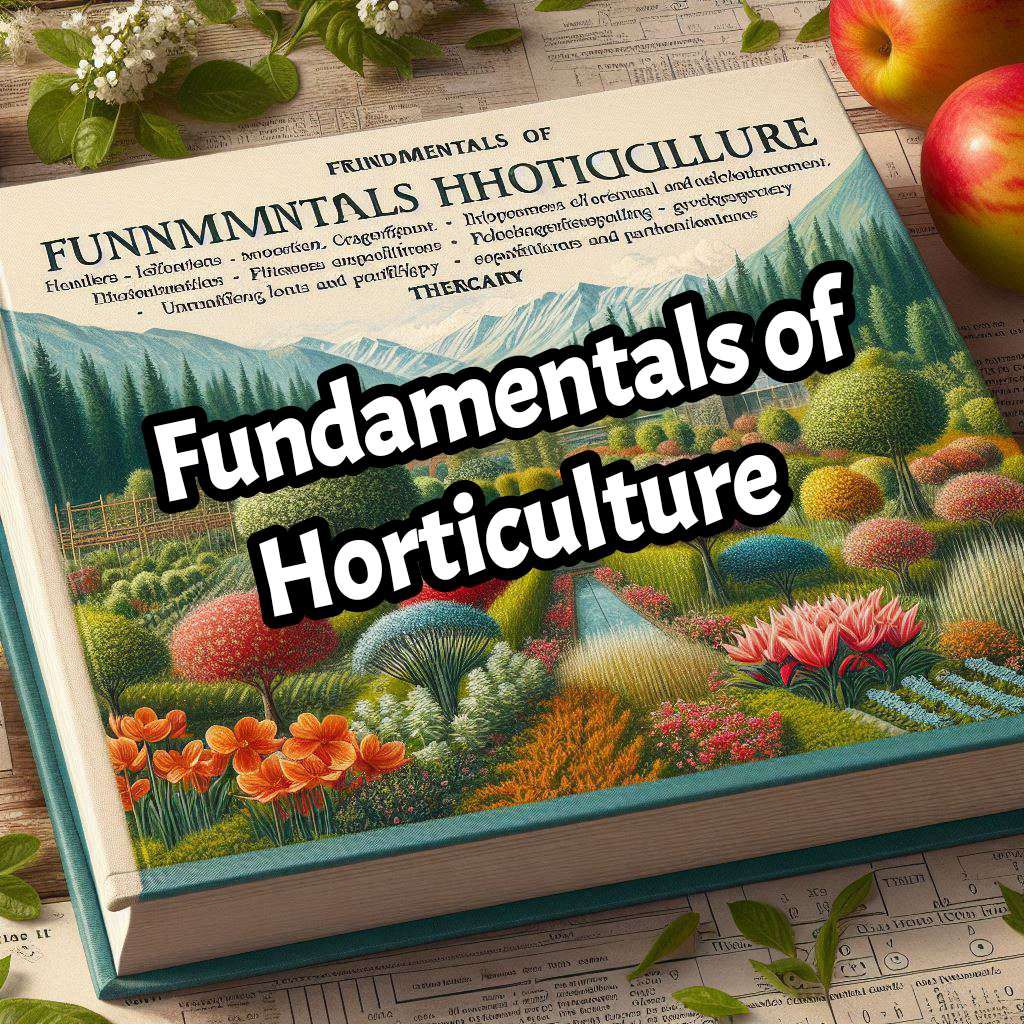Fundamentals of Horticulture – Horticulture is the science and art of growing fruits, vegetables, nuts, seeds, herbs, sprouts, mushrooms, algae, flowers, seaweeds, and non-food crops like grass and ornamental trees and plants.
| Fundamentals of Horticulture PDF | Download |
BSc Agriculture 1st Semester Notes Download
BSc Agriculture Second Semester Notes Download
BSc Agriculture 3rd semester Notes Download
BSc Agriculture 4th semester Notes Download
BSc Agriculture 5th semester Notes Download

Here are some fundamental concepts Horticulture
1. Plant Biology
- Photosynthesis: The process by which plants convert light energy into chemical energy.
- Plant Anatomy: Understanding roots, stems, leaves, flowers, and fruits.
- Growth Stages: Germination, vegetative, flowering, and fruiting.
2. Soil Science
- Soil Composition: Understanding the physical and chemical properties of soil, including pH, texture, and nutrient content.
- Soil Health: Importance of organic matter, microbial activity, and soil structure.
3. Propagation Techniques
- Seed Propagation: Starting plants from seeds.
- Vegetative Propagation: Methods like cuttings, grafting, and layering.
4. Cultivation Practices
- Planting: Timing, spacing, and techniques for planting.
- Watering: Importance of irrigation methods and water management.
- Fertilization: Understanding macronutrients and micronutrients essential for plant growth.
5. Pest and Disease Management
- Integrated Pest Management (IPM): Combining biological, cultural, and chemical practices to manage pests.
- Disease Identification: Recognizing common plant diseases and their management strategies.
6. Environmental Factors
- Climate: Understanding how temperature, humidity, and light affect plant growth.
- Microclimates: Utilizing variations in environmental conditions to optimize plant health.
7. Sustainability Practices
- Organic Horticulture: Principles of organic farming and pest control.
- Water Conservation: Techniques like drip irrigation and rainwater harvesting.
8. Landscape Design
- Aesthetic Principles: Incorporating design elements such as color, form, and texture.
- Plant Selection: Choosing appropriate plants for specific environments and purposes.
9. Crop Management
- Harvesting Techniques: Best practices for harvesting fruits and vegetables.
- Post-Harvest Handling: Techniques for storage, packaging, and distribution to maintain quality.
10. Community and Economic Impact
- Urban Horticulture: The role of horticulture in urban settings, including community gardens and green spaces.
- Market Trends: Understanding consumer preferences and market demands.
Fundamentals of Horticulture syllabus 2(1+1)
Theory
Horticulture-Its definition and branches, importance and scope; horticultural and botanical classification; climate and soil for horticultural crops; Plant propagation-methods and
propagating structures; principles of orchard establishment; Principles and methods of training and pruning, juvenility and flower bud differentiation; unfruitfulness; pollination,
pollinizers and pollinators; fertilization and parthenocarpy; kitchen gardening; garden types and parts; lawn making; medicinal and aromatic plants; species and condiments; use
of plant bio-regulators in horticulture. Irrigation & fertilizers application-method and quantity.
Practical
Identification of garden tools. Identification of horticultural crops. Preparation of seed bed/nursery bed. Practice of sexual and asexual methods of propagation. Layout and
planting of orchard plants. Training and pruning of fruit trees. Transplanting and care of vegetable seedlings. Making of herbaceous and shrubbery borders. Preparation of
potting mixture, potting and repotting. Fertilizer application in different crops. Visits to commercial nurseries/orchard.
FAQ
What is horticulture?
Horticulture is the science and art of cultivating plants, including fruits, vegetables, flowers, and ornamental plants. It encompasses various practices related to plant growth, breeding, and management.
What are the main branches of horticulture?
The main branches include:
Pomology: Cultivation of fruit.
Olericulture: Cultivation of vegetables.
Floriculture: Cultivation of flowering plants.
Landscape Horticulture: Design and management of landscapes.
Viticulture: Cultivation of grapes.
Can I grow plants indoors?
Yes! Many plants thrive indoors, such as:
Herbs: Basil, mint, and parsley.
Houseplants: Spider plants, pothos, and snake plants. Ensure adequate light, humidity, and proper potting mix.



